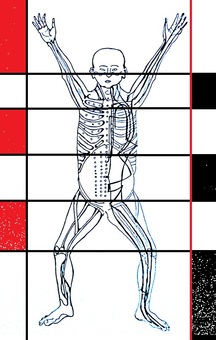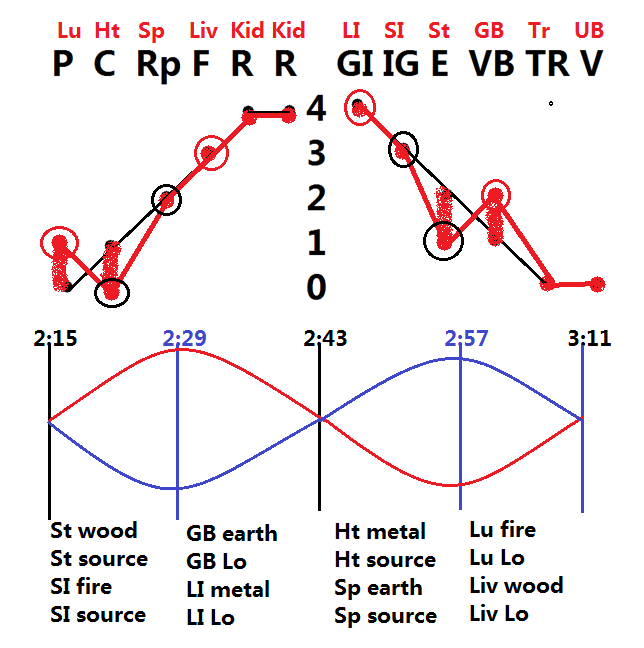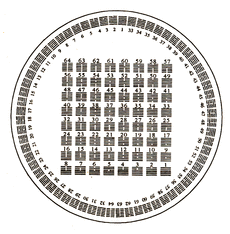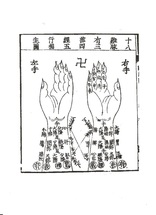人 一 呼 in a man for one exhale En el hombre por una У человека на один выдох
exhalacion
脈 行 三 寸 ,pulsation travels la pulsacion viaja 3 cun, пульсация двигается на 3 цуня
3 cun
一 吸 for one inhale en una inhalacion и на один вдох
脈 行 三 寸 ,pulsation travels la pulsacion viaja 3 cun пульсация двигается на 3 цуня
3 cun
呼 吸 exhale and inhale inhalacion y exhalacion вдох и выдох
定 息 ,make a breath hacen una respiracion составляют дыхание
脈 行 六寸 。and pulsation travels y la pulsacion viaja 6 cun и пульсация двигается 6 цунь
six cun
exhalacion
脈 行 三 寸 ,pulsation travels la pulsacion viaja 3 cun, пульсация двигается на 3 цуня
3 cun
一 吸 for one inhale en una inhalacion и на один вдох
脈 行 三 寸 ,pulsation travels la pulsacion viaja 3 cun пульсация двигается на 3 цуня
3 cun
呼 吸 exhale and inhale inhalacion y exhalacion вдох и выдох
定 息 ,make a breath hacen una respiracion составляют дыхание
脈 行 六寸 。and pulsation travels y la pulsacion viaja 6 cun и пульсация двигается 6 цунь
six cun
| Above you may see the quote from the first difficult issue of Nanjing. As you may see Chinese could use numeration not only as 三 three, for example but also as triple. Triple warmer and so on. This understanding is very important during the treatment for example using 50 yin-yang interactions during 24 hours, described in the same difficult issue. Lets see how it works on practice with patient. First half of the yang cycle yang increasing, yin depleting, it is time do increase qi in depleted yang meridians so we use St meridian which is depleted point wood, movement of this meridian from the pulse and source point to attract qi into this meridian, we may use also SI fire point and source point to attract excess qi from the lung meridian which is also fire movement now. We may moxa back shu point of St in this moment. It is only half of yang cycle, 14 min long and known as ke in classical Chinese literature Often we need only one ke to normalize pulse and return it to the line. During this time qi travels from fingertips of the hand by yang area through the forearm, upper chest/upper back and thigh, indicated with red colour, it is triple cun or triple measure. Any disease of upper chest and thigh can be suxcessfully treated during this moment. Next 14 minutes yang starts do decrease, it is the moment to deplete excessive meridians yang. We use GB meridian point earth, movement in this meridian in our example and Lo point to remove excess. We need to use also LI metal point and Lo point to move qi to deficient Ht meridian also metal movement in our example. We may also needle back shu point of GB. We may also open extra Dai Mai meridian which is full in our case. If pulse wasn't balanced in first ke, it mostly definitely will be balanced during the second ke. During this moment qi travels yang meridians of the shin, abdomen/lumbar area and upper arm areas, indicated with black. Any diseases of these areas are most successfully relieved in this moment. It explains how qi from upper arm yang meridian arrives into shin yang meridians. Totally during entire yang period of 2 ke of yang increasing and yang decreasing qi travels six parts. By analogy we puncture points during yin period. First period of yin increasing we puncture yin meridians on the shin and foot, abdomen/lumbar area, upper arm, these areas are most beneficial for treatment in this moment. Second period when yin decreasing yin meridians of forearm, upper chest/upper back and thigh area are most beneficial for the treatment. It also explains how qi from yin meridians of shin area arrives into forearm. Totally during entire yin period of 2 ke of yin increasing and yin decreasing qi travels six parts. |
|





 RSS Feed
RSS Feed
